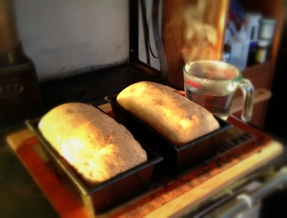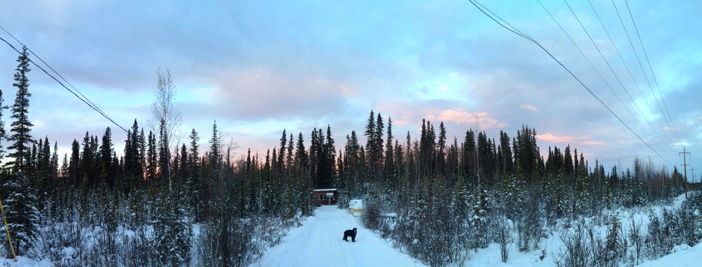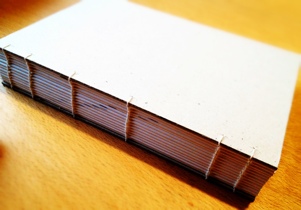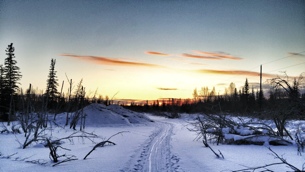Finished Julian Barnes’s Booker Prize winning, and number one Tournament of Books seeded, The Sense of an Ending in what was essentially one sitting today. It is split into two parts, a reflection on growing up from a man past middle age, and then a reanalysis of that life after a bequest from the mother of a former lover. The first part is brilliant, funny, and full of insight into growing up as a man a little too afraid of consequences:
Who had neither won nor lost, but just let life happen to him? Who had the usual ambitions and settled all too quickly for them not being realised? Who avoided being hurt and called it a capacity for survival?
I can’t remember where I came across the idea, but what if we were to live our lives without fear? This is something I have thought a lot about since then, and whether I will have regrets over not choosing the hard road at one time or another because I was afraid of the consequences. Barnes’s narrator clearly has these regrets.
The second part was also very interesting and dealt a lot with another subject I’ve thought about (and which becomes the subject of Open City in similar ways to this book): how the re-telling of our own story, even to ourselves, is often dramatically different than the way other people experienced shared sections of it, and that even when we keep letters, photographs, journal entries and other “objective” records of our lives, our own history has no definitive plot line.
Barnes again:
Later … later there is more uncertainty, more overlapping, more backtracking, more false memories. Back then, you can remember your short life in its entirety. Later, the memory becomes a thing of shreds and patches.
I didn’t like the ending as much as the rest of the book, and based on reviews I’ve seen, many others had the same problem. But there’s a lot of great stuff in this book, and I recommend it. It falls into the “Good, worth your time” category of my last post.
One other note on memory and history: Last week I mentioned to a coworker that I’d never read any Julian Barnes. Turns out I read Metroland in January 1999 and wouldn’t have known it except for the meticulous records I’ve kept, chronicling that part of my history.
The 2012 Tournament of Books judges, books, and pairings have been announced. ToB is my favorite “best-of” books contest, and I'm very much looking forward to the contest itself, starting in March. Meantime, I can attempt to read some of the 2011 books I haven't yet read. I was in the middle of David Foster Wallace’s Pale King, but since that isn't on the list, I'll put it aside for the second time.
Here’s the list. Click the ToB link above to see the judges and pairings (checkmarks indicate what I’ve read, updated to the present):
- Nathacha Appanah, The Last Brother ✓
- Julian Barnes, The Sense of an Ending ✓
- Teju Cole, Open City ✓
- Helen DeWitt, Lightning Rods ✓
- Patrick deWitt, The Sisters Brothers ✓
- Jeffrey Eugenides, The Marriage Plot ✓
- Chad Harbach, The Art of Fielding ✓
- Alan Hollinghurst, The Stranger’s Child ✗
- Jesmyn Ward, Salvage the Bones ✓
- Haruki Murakami, 1Q84 ✓
- Téa Obreht, The Tiger’s Wife
- Michael Ondaatje, The Cat’s Table ✓
- Ann Patchett, State of Wonder ✓
- Donald Ray Pollock, Devil All the Time ✓
- Karen Russell, Swamplandia! ✓
- Kate Zambreno, Green Girl ✓
I’ve read Open City, The Sisters Brothers, The Marriage Plot, The Art of Fielding, 1Q84, and Swamplandia!, and just finished Green Girl.
Rather than ranking them, I’ll put them into thee categories:
Great, should win
- The Sisters Brothers — a hilarious western novel. Deadwood as done by the Cohen brothers.
- 1Q84 — Murakami at his best, this time with a kick-ass female lead.
- The Art of Fielding — fantastic story (plus baseball!) that lived up to the hype.
Good, worth your time
- The Marriage Plot — I enjoyed this one a lot, but I thought it lagged in the middle.
- Open City — A very interesting reading experience. I imagine those familiar with New York City would really enjoy it since the book is basically about a guy walking around New York reflecting on his life.
- Swamplandia! — I was hoping this would be another Geek Love, and it started off really well, but I lost interest by the end of the book.
Not recommended
- Green Girl — I just finished this one, and I didn’t enjoy it at all. It is the story of a girl from Chicago trying to make it in London. Why she moved there and what motivated her to do the things she did (mostly debase and feel sorry for herself) were not clear enough to me, and I found it depressing and boring.
Now I'm onto The Sense of an Ending by Julian Barnes, one of the top seeds, so I'm hopeful I'll enjoy it more. I doubt if any of the others on the list can compete with my top three, but it will be interesting to see what I think, as well as to follow the competition in March.
Get reading!
Sewed another scratch book for work. The paper is Mowhawk Superfine, with plain low-acid boards, and linen thread. I used the Coptic sewn binding technique from Keith Smith’s first non-adhesive binding book. I’ve used this on a lot of projects, and I really like the look, durability, and that it allows the books to lay completely flat.
I had originally planned on twelve sections, each made from eight letter sized sheets (short grain) folded in half, but as always, I forget that the last section and the final board are sewn together, so I added a thirteenth section. Thirteen sections, eight pieces of paper, four pages per piece equals a book of 416 pages.
This year I’ve made a serious effort to improve my physical fitness. I started lifting weights in August, and worked hard to commute to work as much as I could by bicycle (6.7 miles each way) or ski (4.1 miles). I commuted on 102 days this year, which is 40% of the possible work days in the year. I also spent a lot of time out on the trails with our now 15-year old dog, Nika. In May, I set up a standing desk at work, and as I’ll demonstrate below, this is a significant improvement over spending all those hours sitting, at least for energy consumption. As a result of all this, I feel like I am in the best shape of my life, and that makes me feel good as I enter middle age.
Here’s the summary of what I did this year (details on the calculations appear below):
| Activity | Miles | Hours | Speed | Energy |
|---|---|---|---|---|
| Treadmill | 8.98 | 1.58 | 5.62 | 925 |
| Skiing | 268.35 | 54.25 | 4.98 | 27,685 |
| Bicycling | 960.22 | 69.67 | 13.86 | 38,606 |
| Hiking | 201.06 | 81.56 | 2.53 | 28,750 |
| Skating | 3.49 | 0.75 | 4.65 | 236 |
| Lifting | 56.10 | 19,775 | ||
| TOTAL | 1,442 | 263.91 | 115,976 |
The other thing I did was start standing up at my desk at work. I spent 1,258 hours at my desk after I started standing. According to the Compendium of Physical Activities, standing at work consumes 2.3 metabolic equivalent units (MET). This is the ratio of work metabolic rate over resting metabolic rate, which would be 1.0 MET. Thus, standing uses an additional 1.3 MET over resting. Sitting at a desk is 1.5 MET, which means standing adds 0.8 MET.
To use these numbers, you need an estimate of your resting metabolic rate. Using the Mifflin et al. equation on this page I get 1,691 Kcal/day, or 70.5 Kcal per hour for my height, weight, and age. For those 1,258 hours standing at work I burned an additional 71 thousand calories: 1,258 • 0.8 • 70.5 = 70,951 Kcal (the “calories” reported on food labels are technically kilocalories (Kcal) in energy units). That’s a lot of energy, just by standing instead of sitting.
The energy values in the table above were also calculated using the same methods. I fiddled with the tabular values from the compendium and got the following approximations:
- Running MET = 1.653 • speed (mph)
- Skiing = ((speed - 2.5) / 2) + 7
- Bicycling = speed - 5
- Hiking = 6
- Skating = 5.5
- Lifting = 6
Despite the amount of energy consumed by standing instead of sitting at work, I think there is a real benefit to the more intense exercises listed in the table. These strengthen and build skeletal and cardiovascular muscle in ways that simply standing all day don’t.
When all the numbers are totaled, I burned an extra 512 calories (318 exercising, 194 standing) each day in 2011. That’s certainly worth a beer or two, and I look and feel better for it even drinking them!




